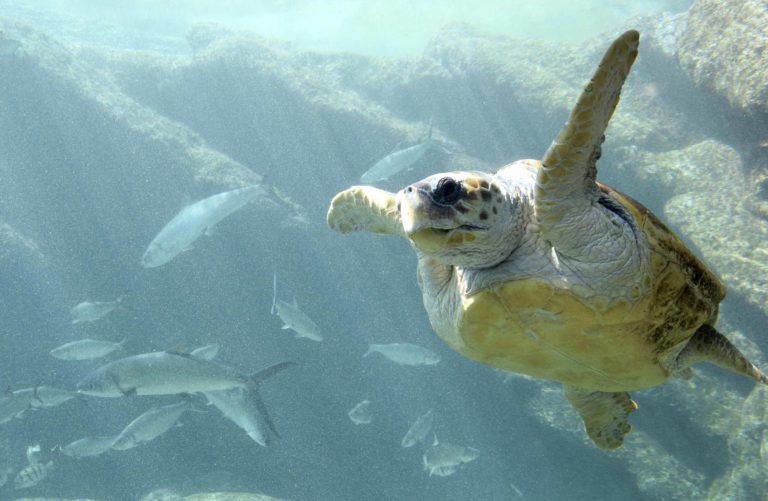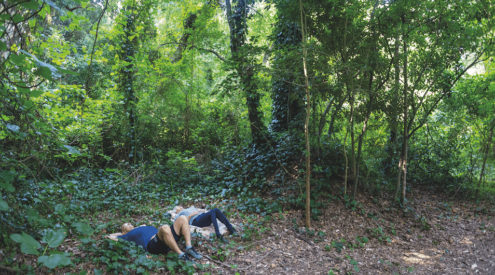A rescued loggerhead sea turtle, named Herbie, has been in the care of the South African Association for Marine Biological Research (Saambr) at uShaka Sea World (a section of Ushaka Marine World) in Durban since 2003. She was taken to uShaka Sea World after she was found entangled in a shark net.

Herbie swims in her old home, uShaka aquarium. Image Credit: South African Association for Marine Biological Research
Sadly, loggerheads are on the endangered species list. One of the causes is the rise in abandoned fishing nets globally. Loggerheads like Herbie get caught in nets and cannot break free.
It is difficult to estimate her exact age, but the experts at uShaka believe she is around 24 years old and she has entered her most fertile phase. Although she has successfully laid eggs in the enclosure, they were never fertilised by a male and marine biologists at the aquarium decided that it’s time for her to find a partner and lay eggs in the wild.
It was decided that she would be released at Sodwana Bay, within the iSimangaliso Wetland Park, where her chances of survival are high.
It was an emotional goodbye for the team and before transporting her to the release site, the team held a farewell party for the much-loved turtle.
Head of the programme, Dr George Hughes, had worked with Herbie since her arrival at the rehabilitation centre and Dr Gcina Mhlophe sang a Xhosa song bidding Herbie farewell as she made her way from the transport crate into the ocean. “When she got to the water, and took off, without a backward look I thought, she is home” Dr Mhlophe says in the video below.
Herbie has a satellite transmitter, which was donated by donated by the Two Oceans Aquarium in Cape Town, attached to her back so that scientists will be able to track her movements.
Track Herbies movements here as she embarks on her journey. Geo-location maps are updated regularly.
Facts about Loggerhead sea turtles
- They can be found in the Atlantic, Pacific, and Indian Oceans, as well as the Mediterranean Sea
- Females only briefly visit shore to lay eggs
- The fertility rate of females is relatively low, sometimes only producing eggs two to three years
- The sea turtle is an omnivore, and eat shellfish that are deep dwellers of the ocean. They also eat crabs, clams, mussels and more.
















